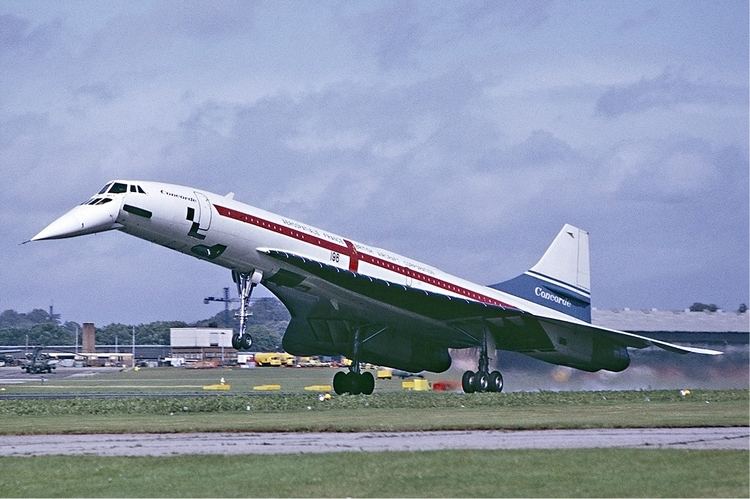 | ||
The droop-nose configuration is a distinctive feature of some supersonic aircraft, most notably both Concorde and the Tupolev Tu-144. When these aircraft were in service, the pilot would lower the nose cone to improve visibility of the runway and taxiways. When in flight, the nose would be raised. Concorde also had a moving visor that would slide into and out of the nose. The Tu-144's visor was part of the nose and did not retract.
The Fairey FD2 experimental aircraft had used a droop nose; when one was converted into the BAC 221 as a testbed for the Concorde wing shape, the droop nose was carried over.
The Concorde droop nose was designed and manufactured under sub contract by Marshall Aerospace in Cambridge, UK. The nose can be drooped to one of two positions - 5 degrees (for taxiing and for take-off), and the fully drooped 12.5 degree position (used during landing, when the nose-high attitude of Concorde requires this lower nose position so the pilots can see the approaching runway). The nose and visor are hydraulically operated, by a small lever on the co-pilot's side of the cockpit. There is also a standby droop system if the main system fails (operated from the cockpit centre console), and as a last resort if both hydraulic systems fail, a lever can be pulled in the cockpit which releases the mechanical latches, allowing the nose to fall under gravity to the 12.5 degree position.
